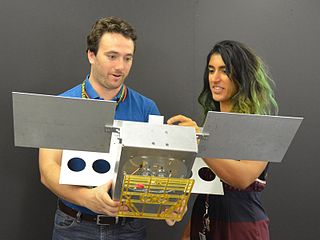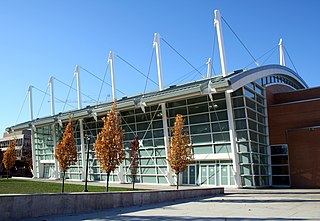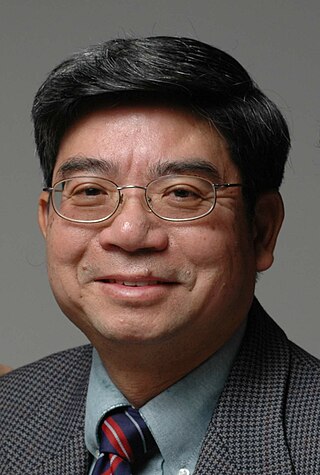
Engineers, as practitioners of engineering, are professionals who invent, design, analyze, build and test machines, complex systems, structures, gadgets and materials to fulfill functional objectives and requirements while considering the limitations imposed by practicality, regulation, safety and cost. The word engineer is derived from the Latin words ingeniare and ingenium ("cleverness"). The foundational qualifications of a licensed professional engineer typically include a four-year bachelor's degree in an engineering discipline, or in some jurisdictions, a master's degree in an engineering discipline plus four to six years of peer-reviewed professional practice and passage of engineering board examinations.

Landscape architecture is the design of outdoor areas, landmarks, and structures to achieve environmental, social-behavioural, or aesthetic outcomes. It involves the systematic design and general engineering of various structures for construction and human use, investigation of existing social, ecological, and soil conditions and processes in the landscape, and the design of other interventions that will produce desired outcomes.

Naval architecture, or naval engineering, is an engineering discipline incorporating elements of mechanical, electrical, electronic, software and safety engineering as applied to the engineering design process, shipbuilding, maintenance, and operation of marine vessels and structures. Naval architecture involves basic and applied research, design, development, design evaluation (classification) and calculations during all stages of the life of a marine vehicle. Preliminary design of the vessel, its detailed design, construction, trials, operation and maintenance, launching and dry-docking are the main activities involved. Ship design calculations are also required for ships being modified. Naval architecture also involves formulation of safety regulations and damage-control rules and the approval and certification of ship designs to meet statutory and non-statutory requirements.
Henry Adrian "Packy" Schade was a United States Navy officer, naval architect, and professor.
Regulation and licensure in engineering is established by various jurisdictions of the world to encourage life, public welfare, safety, well-being, then environment and other interests of the general public and to define the licensure process through which an engineer becomes licensed to practice engineering and to provide professional services and products to the public.
Structural engineers analyze, design, plan, and research structural components and structural systems to achieve design goals and ensure the safety and comfort of users or occupants. Their work takes account mainly of safety, technical, economic, and environmental concerns, but they may also consider aesthetic and social factors.
Software engineering professionalism is a movement to make software engineering a profession, with aspects such as degree and certification programs, professional associations, professional ethics, and government licensing. The field is a licensed discipline in Texas in the United States, Engineers Australia(Course Accreditation since 2001, not Licensing), and many provinces in Canada.
A Bachelor of Engineering (BE or BEngg) or a Bachelor of Science in Engineering (BSc (Engg) or BSE) is an undergraduate academic degree awarded to a student after three to five years of studying engineering at an accredited college or university.

Marine engineering is the engineering of boats, ships, submarines, and any other marine vessel. Here it is also taken to include the engineering of other ocean systems and structures – referred to in certain academic and professional circles as “ocean engineering.”

The Royal Institution of Naval Architects is an international organisation representing naval architects. It is an elite international professional institution based in London. Its members are involved worldwide at all levels in the design, construction, repair and operation of ships, boats and marine structures. Members are elected by the council and are presented with the following titles : Associate (AssocRINA); Associate Member (AMRINA); Member (MRINA); and Fellow (FRINA).
Engineering ethics is the field of system of moral principles that apply to the practice of engineering. The field examines and sets the obligations by engineers to society, to their clients, and to the profession. As a scholarly discipline, it is closely related to subjects such as the philosophy of science, the philosophy of engineering, and the ethics of technology.
The Society of Allied Weight Engineers (SAWE) is a professional society of engineers that pertains to the specific field of Mass Properties.

The Professional Regulation Commission, otherwise known as the PRC, is a three-man commission attached to Department of Labor and Employment (DOLE). Its mandate is to regulate and supervise the practice of the professionals who constitute the highly skilled manpower of the country. As the agency-in-charge of the professional sector, the PRC plays a strategic role in developing the corps of professionals for industry, commerce, governance, and the economy.

The American Society of Naval Engineers (ASNE) is a professional association of naval engineers. Naval Engineering includes all arts and sciences as applied in the research, development, design, construction, operation, maintenance, and logistic support of surface and subsurface ships and marine craft; naval and maritime auxiliaries; aviation and space systems; combat systems including command and control, electronics, and ordnance systems; ocean structures; and associated shore facilities which are used by naval and other military forces and civilian maritime organizations. ASNE's membership consists of military and civilian engineering professionals, defense industry engineers, academics, and engineering students.

Architectural engineering or architecture engineering, also known as building engineering, is an engineering discipline that deals with the engineering systems - such as structural, mechanical, electrical, lighting, environmental, climate control, telecommunications, security, and other technologies used in buildings.

Engineers Australia (EA) is an Australian professional body and not-for-profit organisation whose purpose is to advance the science and practice of engineering for the benefit of the community. Engineers Australia is Australia's recognized organization for accreditation of professional engineering qualifications under the Washington Accord. As of 2022, EA has 115,000 members, which includes 31,000 students.
The SeaPerch is an educational tool and kit that allows elementary, middle, and high-school students to construct a simple, remotely operated underwater vehicle, or Remotely Operated Vehicle (ROV), from polyvinyl chloride (PVC) pipe and other readily made materials. The SeaPerch program is a curriculum designed program that teaches students basic skills in ship and submarine design and encourages students to explore naval architecture and marine and ocean engineering concepts. It was inspired by the 1997 book,Build Your Own Underwater Robot and other Wet Projects, by Harry Bohm and Vickie Jensen. The Massachusetts Institute of Technology Sea Grant (MITSG) College Program created the SeaPerch initiative in 2003, and it is sponsored by the Office of Naval Research, as part of the National Naval Responsibility for Naval Engineering (NNRNE) to find the next generation of Naval Architects, Marine Engineers, Naval Engineers, and Ocean Engineers.
The Society for Underwater Technology (SUT) is an international learned society for marine science and technology with headquarters in London, England that was founded in 1966. There are branches in Aberdeen (Scotland), Houston (USA), Rio de Janeiro (Brazil), Newcastle (England), Perth (Australia), London (England), Melbourne (Australia), Kuala Lumpur (Malaysia), Singapore, Norway (Bergen), China (Beijing) West Africa (Nigeria), the Middle East (UAE) and new branches in early stages of development in St John's Newfoundland & the Eastern Mediterranean to be based in Cyprus. Membership is open to individuals, companies, and institutions with a genuine interest in the broad field of underwater technology. SUT is registered as a charity in the UK, other branches are constituted as charities or 'not-for-profits' as per local legislation.

Ronald W. Yeung is a Distinguished Professor of Hydromechanics and Ocean Engineering at the University of California, Berkeley. He is one of the pioneers in the field of numerical ship hydrodynamics and marine renewable energy.
The following outline is provided as an overview of and topical guide to software development:










